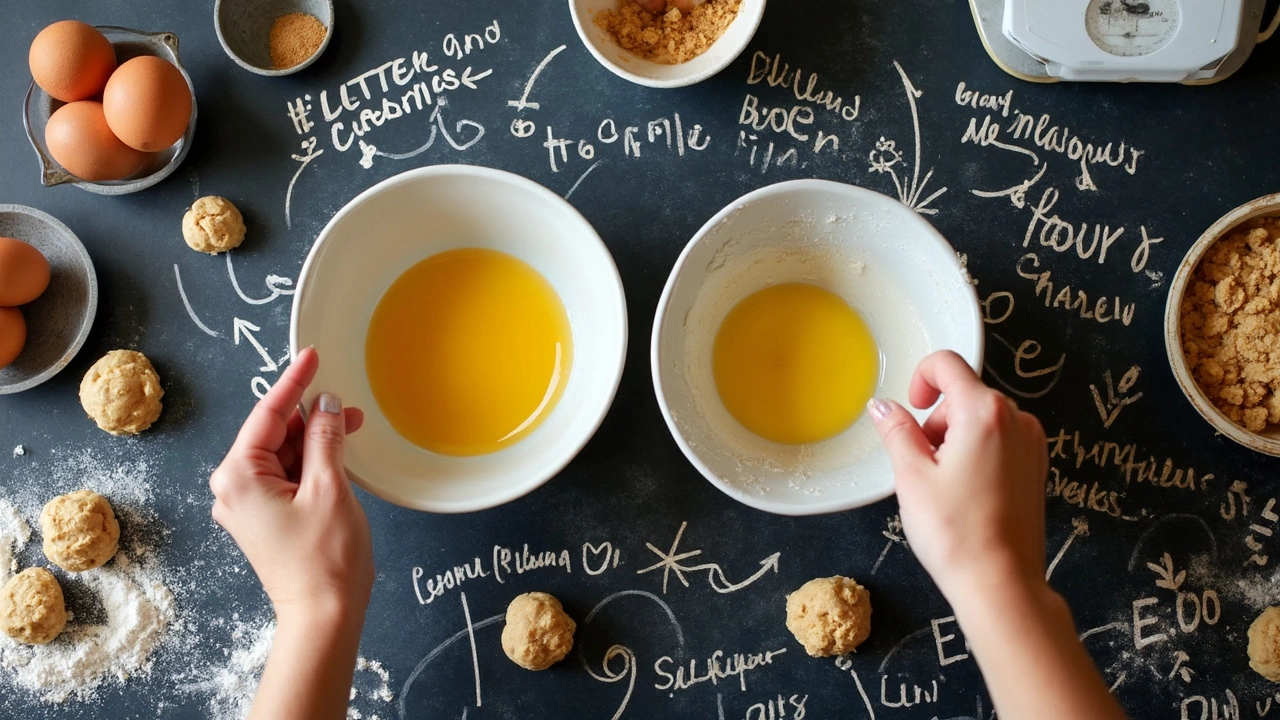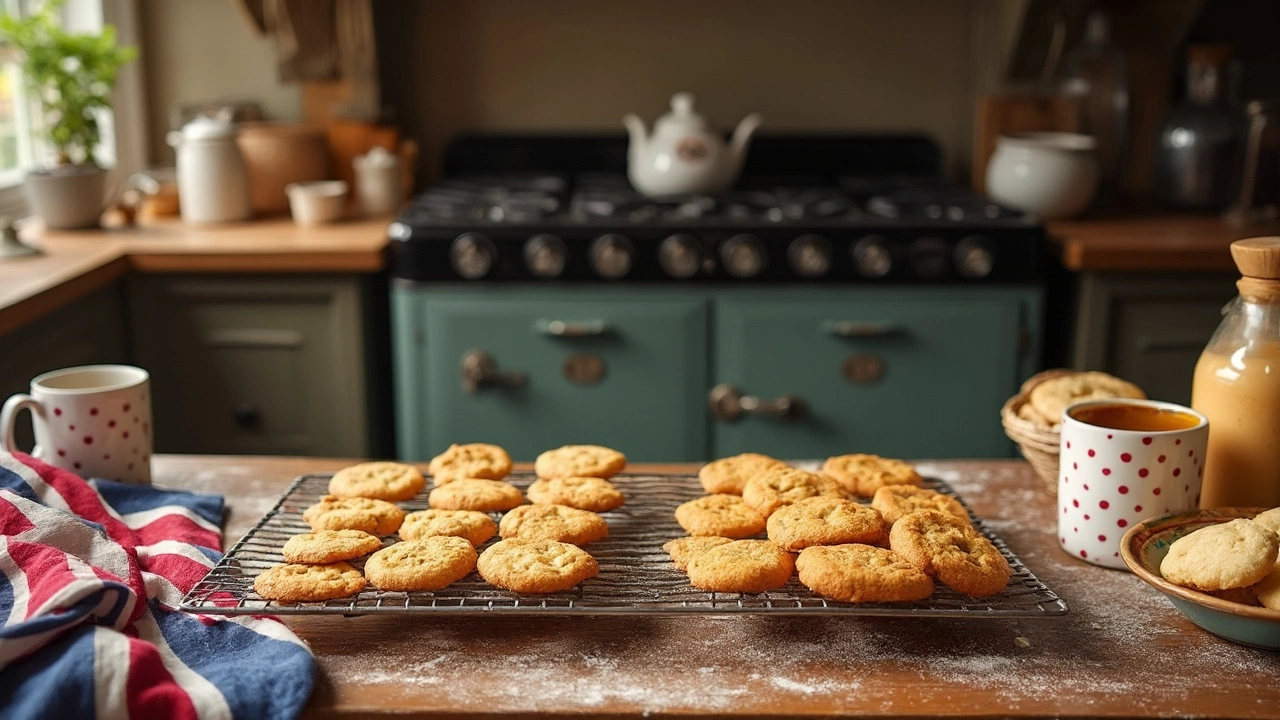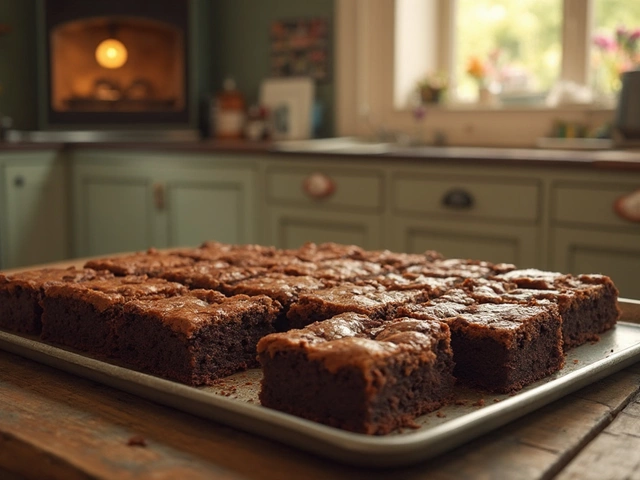Pop a cookie in your mouth and your brain launches into detective mode—is it delightfully chewy, crisp around the edges, or meltingly soft inside? That texture reveals more about the fat in the dough than you might expect. The humble debate between using oil or butter in cookies has split kitchens for decades. Some swear by creamy blocks of butter, while others argue for the subtle efficiency of oil. It’s not just a question of taste, either. Your choice of fat tweaks everything from flavor to shelf life, making this one of baking’s most overlooked secrets. And here's something wild: Canadian bakers use nearly equal amounts of butter and oil in home baking, so the answer isn't obvious even here in Halifax. But what’s really going on in your oven when you pick one over the other?
The Science of Fats: Why Fat Type Matters in Cookies
The role of fat in a cookie is huge—think about how the dough comes together, how it spreads in the oven, and how your bite feels. Both oil and butter are fats, but they behave pretty differently when exposed to sugar, flour, and heat. Butter is made up of about 80% milk fat, 16-18% water, and bits of milk solids; its solid structure when chilled lets it trap air and shape dough into soft, scoopable balls. Oil, by comparison, is 100% fat and liquid at room temperature. This change in structure is a game changer for bakers who care about texture above all else.
The fat you pick impacts how cookies spread. Butter solidifies at fridge temperature, letting you chill dough for a thick, bakery-style texture. When popped in the oven, those water droplets from the butter start to steam, aerating the dough and making it puffier or cakier. Oil, meanwhile, skips the steam step—so oil-based cookies tend to be flatter and spread out more. The pure fat in oil coats flour proteins more thoroughly, so gluten formation drops and you get softer, less structured cookies that often melt in your mouth but can lack the chewiness people adore in butter cookies.
If you compare nutrition labels side by side, butter has about 7g of fat per tablespoon and roughly 100 calories, while vegetable oils (canola, sunflower, or light olive oil) hover around 14g of fat and about 120 calories per tablespoon. A 2023 survey by the Canadian Baking Association showed 72% of home bakers stick with unsalted butter for cookies, citing "flavor quality," while only 21% claimed to regularly use oil, mostly for vegan or dairy-free recipes.
| Fat Type | Fat Content (per tbsp) | Calories (per tbsp) | Texture Result |
|---|---|---|---|
| Butter | 7g | 100 | Crispy edges, chewy middle, richer flavor |
| Oil | 14g | 120 | Smooth, soft, spreads more, neutral flavor |
Flavor: The Real Personality Behind Cookies
If we’re talking about flavor, butter wins hearts over and over. The magic comes from butter’s milk solids, which brown in the oven and bring out nutty, caramel-like notes that just smell and taste undeniably delicious. Think of that boost you get from chocolate chip cookies that leave a whiff of toffee in the air—yup, that’s butter in action. It’s all thanks to a process called the Maillard Reaction, where proteins and sugars in butter combine with heat to amp up flavor. No vegetable oil or canola oil can match that punch.
Oil’s big draw is its subtlety. It doesn’t compete with your add-ins. Throw in bold spices, zesty peels, or plenty of chocolate, and oil just hangs out in the background, letting your creative flavors shine. It’s perfect for recipes where you want, say, orange zest or almond extract to have the spotlight. But don’t expect a cookie baked with oil to trick your senses with “buttery” flavor; it simply can’t go there.
Some bakers mix both. Want butter’s flavor but the shelf-stable softness of oil? Try a recipe with half-and-half—you’ll get a soft cookie that stays fresh longer, but with those hit-you-in-the-feels brown butter notes intact. For folks who want to avoid dairy (or need a vegan cookie), flavorful oils like extra-virgin olive oil or coconut oil offer their own taste twists, though they’re not as neutral as vegetable or canola oil. A well-tested trick: swap in half the butter for oil if you live in a humid place like Halifax. Humidity can dry cookies out on your counter, and the extra oil helps keep them softer after a day or two.

Texture and Appearance: What You Actually Get
This is where the biggest cookie fights break out. If your heart is set on those soft bakery-style cookies with golden crisp edges, butter’s your ride-or-die. But go with oil if you want uniform softness, spread, and that nearly fudgy center. Just know what you’re biting into before you make the swap.
- Butter cookies are thick, craggy, golden. Their fat melts slowly, so you get sections of crisp, chewy, and gooey all in one bite. That’s why iconic chocolate chip cookies almost always start with creamed butter. Creamed butter, which just means beating cold butter with sugar, adds little air bubbles—the kind that puff up during baking and give you a pleasing texture and even rise.
- Oil cookies tend to be shinier, paler, and flatter. Since the dough can’t hold air, the cookies flatten out more, bake faster, and come out glossy on top. This makes them great for "scoop and drop" cookies, like snickerdoodles or oil-based sugar cookies. The edges are rarely crisp, but the centers are soft for days—a bonus for shipping or storing cookies ahead of time.
I put this to the test with a chocolate chip cookie showdown. Using my go-to recipe, I swapped the same amount of melted butter with canola oil. The oil batch spread far more, had less caramel flavor, and tasted a bit bland when side-by-side. They kept well for almost a week, while the butter batch had almost entirely vanished by day three, both from the counter and because, well, my family likes cookies.
If you’re baking at altitude or in areas with cooler temperatures, butter-based dough can be chilled and scooped without melting into puddles. With oil, expect flatter, more spread-out shapes unless you add more flour or chill the dough longer. Judging by Halifax kitchen windows at dinnertime, those bold golden rounds of shortbread are butter all the way.
Health and Storage: Practical Perks for Busy Bakers
Here’s a plot twist: most vegetable oils are lower in saturated fat compared to butter. Back in 2024, Health Canada updated guidelines to suggest swapping some saturated animal fats for vegetable oils, as those are higher in unsaturated "heart-healthy" fats. If you’re watching cholesterol or baking for someone with heart health in mind, oil might nudge into the lead.
Even so, both butter and oil can fit into a balanced treat. A tablespoon here or there won’t swing anyone’s health overnight. The real game-changer is shelf life. Butter cookies, especially those loaded with brown sugar, last about 3-5 days at room temperature before going a smidge stale. The water in butter is great for creating steam in baking, but it draws in mold and spoils faster if not stored properly.
Oil, by being purely fat, helps cookies stay softer for up to a week or longer if tightly sealed. Olive oil cookies occasionally taste better on day two or three, when the flavors mellow and the crumb sets. That’s why oil is king for home bakers making cookies in advance or mailing care packages. Freezing cookies? Both butter and oil doughs freeze well, but oil-based cookies keep their texture better after thawing. And if you often forget cookies on your counter for days, try oil for a longer-lasting, fresher taste.
One neat health trick: replace a third of the butter in your favorite recipe with Greek yogurt or pumpkin puree. It lightens things up, adds moisture, and lets butter’s flavor shine without all the saturated fat.

Tips, Tricks, and Perfect Cookie Recipes to Try
Ready to experiment? Here are some real-world baking hacks from weeks of testing (and let's face it, cookie snacking) in Halifax kitchens:
- When swapping butter for oil, use 20% less oil than butter called for. For example, if a recipe needs 100g butter, use about 80g oil. This accounts for the water in butter versus the pure fat of oil.
- Chill oil-based doughs before baking. Pop them in the freezer for 20 minutes—this cuts down on spread and mimics some of butter’s built-in structure.
- If you miss the "butter flavor" but want an oil cookie, add a splash of butter extract or brown the oil with a spoonful of milk powder. This gives you some toasted notes without dairy.
- Try olive oil for cookies with lemon, orange, or herbs—the Mediterranean flavors really pop.
- Need vegan cookies? Combine canola oil with nut butter or tahini for rich taste and great structure.
- For bright white cookies (like holiday sugar cookies), stick with oil, as butter will turn the dough golden.
- Shipping cookies? Opt for oil—the texture holds up better across the miles and you’re less likely to open a stale package at the other end.
Here’s a quick visual table as a recap for picking your fat:
| Baking Goal | Best Fat | Why |
|---|---|---|
| Rich Flavour | Butter | Maillard reaction, nutty/caramel notes |
| Softness/Shelf Life | Oil | Pure fat keeps cookies soft |
| Vegan/Dairy-Free | Oil | No milk or animal byproducts |
| Traditional Texture | Butter | Perfect chewy/crispy ratio |
| Quick Prep & Storage | Oil | No melting or creaming needed, longer room temp shelf life |
Cookie dough is a forgiving canvas, so don’t be afraid to play around. Halifax weather goes from damp chill to sticky warmth and back, so keep an eye on humidity—add a bit more flour if oil cookies spread too much or pop butter cookie dough in the fridge when your kitchen’s a sauna. No matter which you pick, someone will be back for seconds.





